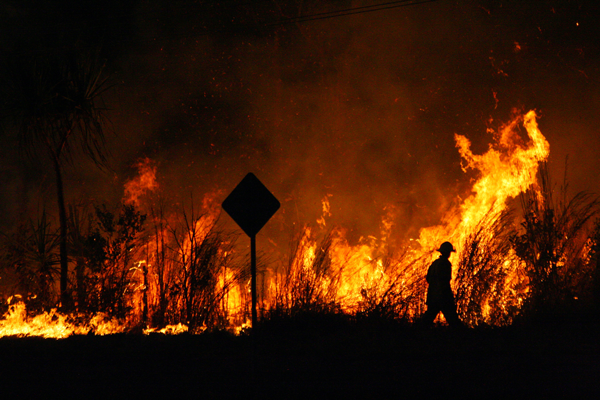As we move through 2025, the weather, water, and climate industry is poised for significant transformation. The rapidly evolving landscape is influenced by advancements in artificial intelligence, the urgent need for extreme weather adaptation, and enhanced collaboration across sectors. These elements are not only reshaping how we approach forecasting but are also critical in developing strategies for resilience in the face of increasing weather challenges.
In this article, we will explore the key weather trends for 2025, highlighting how they will impact the future of weather intelligence and the importance of leveraging cutting-edge data solutions for effective decision-making.
The Top Weather Trends of 2025
1. AI & Machine Learning Are Reshaping Modeling & Forecasting

From improving the accuracy of hurricane forecasts to enhancing flood prediction models, AI-driven advancements are making weather forecasting and analysis more precise and actionable. As AI models become more sophisticated, data quality and accessibility will be more critical than ever. The industry is focusing on integrating diverse, high-resolution datasets to train and refine these systems.
2. Weather Resilience Takes Center Stage
Extreme weather events are intensifying in impact. Whether it’s record-breaking wildfires, devastating hurricanes, or prolonged heat waves, 2025 is already shaping up to be another year where weather resilience is a top global priority.
Urgency around solutions that go beyond forecasting and toward adaptive strategies have been centered on:
- Wildfire resilience and the need for better fire weather modeling, particularly for power grid management and disaster response.
- Hurricane forecasting and preparedness, with a focus on how communities can minimize damage and recover more quickly.
- Long-term adaptation efforts, from urban planning to agricultural shifts.
It’s clear that businesses, governments, and research institutions are now working together to translate data into actionable strategies—a shift that will define the next decade.
3. The Future is Collaborative: Public, Private & Academic Partnerships
Another major theme within in the industry has been the increasing collaboration between public agencies, private companies, and academic institutions. No single sector can solve the challenges posed by climate change and extreme weather, but collective innovation is proving to be the best path forward.
Examples of this collaboration include:
- Universities partnering with government agencies to test new climate and AI models.
- Private companies integrating real-time weather data with AI-powered risk assessment tools.
- Local governments working with tech firms to expand data access and deploy new resilience measures in at-risk communities.
By pooling resources and expertise, these partnerships are accelerating breakthroughs in forecasting, emergency response, and long-term weather impact planning. Several key initiatives that have the potential to be particularly transformative include:
- Wildfire & Fire Weather Innovation – With wildfires becoming more devastating each year, experts from the utility sector, atmospheric science, and disaster response agencies are sharing new research and real-world applications for fire weather modeling.
- Hurricanes & Extreme Weather Preparedness – Following the impacts of Hurricanes Milton and Helene in the U.S., new research projects are exploring new strategies for predicting storm paths, strengthening infrastructure, and improving community resilience.
- Student Research & Emerging Technologies – Meteorologists are continuing to provide cutting-edge research on radar advancements, AI-driven weather models, and communication strategies for communities impacted by extreme weather events.
What This Means for 2025 & Beyond
One thing is clear: the weather industry is moving toward a smarter, more adaptive future—one where technology, data, and collaboration play a pivotal role.
For organizations, businesses, and researchers, staying ahead of these trends means leveraging the right data solutions. At Synoptic, we’re committed to providing comprehensive weather intelligence to help industries make informed decisions in an era of increasing weather volatility.
Want to explore how Synoptic’s data solutions can enhance your forecasting, risk management, or research efforts? Let’s connect.
📩 Contact us today to learn more.

